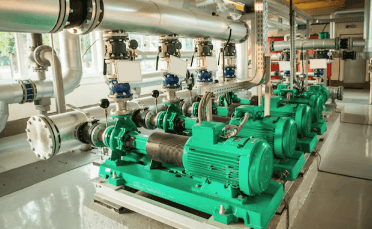Question
Statement 2: Diaphragm pump is an example of _____
a.
True, negative displacement pump
b.
True, positive displacement pump
c.
False, negative displacement pump
d.
False, positive displacement pump
Posted under Food Engineering
Interact with the Community - Share Your Thoughts
Uncertain About the Answer? Seek Clarification Here.
Understand the Explanation? Include it Here.
Q. Statement 1: Diaphragm pumps can handle corrosive material and do not have leakage problems, but, they only vibrate hence the output is low. Statement 2: Diaphragm pump is an...
Similar Questions
Explore Relevant Multiple Choice Questions (MCQs)
Q. Statement 1: Fans and blowers create pressure energy whereas compressors don’t.
Statement 2: In food processing various liquids like milk and juices are transported by pumps
View solution
Q. Drain pipes are present to remove _____
View solution
Q. In food industry, chlorine line is painted _____ and hydrogen line is painted _____
View solution
Q. _____ is a mechanical gadget used to prevent leaks.
View solution
Q. In a rota meter _________ force is directly proportional to _____ of the fluid.
View solution
Q. Which correction of the orifice meter is corrected in the venturimeter?
View solution
Q. Rheology of food in the food processing industry is how the food is affected when _____ is applied.
View solution
Q. Statement 1: Starch is _____ as its viscosity decreases with an increase in shear stress.
Statement 2: Bingham plastics follow Newton’s law of viscosity at low shears.
View solution
Q. Statement 1: Blood is a _____
Statement 2: Thixotropic fluids are fluids whose viscosity decreases when subjected to shear stress initially but eventually with time, the viscosity increases.
View solution
Q. Which of the flowing is true about two-parameter model?
View solution
Q. Statement 1: Apparent viscosity μ_a is related to shear stress (τ) and shear strain (γ) as μ_a= τ/γ.
Statement 2: The equation τ=Kγⁿ becomes μ_a= τ/γ = Kγ⁽ⁿ⁻¹⁾ .
View solution
Q. Statement 1: In μ_a= τ/γ = Kγ⁽ⁿ⁻¹⁾ , n = consistency index and K is the flow behaviour index.
Statement 2: n= 1 for Newtonian fluids, n<1 for dilatant fluids and n>1 for pseudo plastic fluids.
View solution
Q. Statement 1: Considering the equation, μ_a= τ/γ = Kγ⁽ⁿ⁻¹⁾ , for pseudo plastic fluids, n<1 and they’re called Shear thinning liquids and dilatant fluids are called Shear thickening liquids as n>1.
Statement 2: Cooked starch solution is a Shear thinning liquid and dairy cream is a Shear thickening liquid.
View solution
Q. Which of the following is a name of an actual viscometer?
View solution
Q. Statement 1: Brookfield viscometer is an example of Coaxial Cylinder Viscometer.
Statement 2: Working principle of a Brookfield viscometer: Two coaxial cylinders. Liquid is filled in between them. The viscosity produces torque which is directly proportional to the shear stress.
View solution
Q. Statement 1: Brookfield viscometer is very robust, is supported by software and even shows values of K and n, but, sometimes particles suspended in the fluid cause problems.
Statement 2: Drawbacks of plate and cone viscometer: edge-effects, turbulence and temperature effects.
View solution
Q. Statement 1: Evaporation is considered a mass and heat transfer operation.
Statement 2: After evaporation, solids are left behind.
View solution
Q. During evaporation of edible solutions, the BPR-boiling point rise should be _____ and the foaming and scale formation should be _____
View solution
Q. Which of the following is true while concentrating jams?
View solution
Q. Statement 1: Boiling point rise is due to the colligative properties due to the presence of solid particles in the solvent.
Statement 2: Boiling point rise is due to the increase in pressure at the bottom of the solvent due to hydro-static head of the column.
View solution
Recommended Subjects
Are you eager to expand your knowledge beyond Food Engineering? We've handpicked a range of related categories that you might find intriguing.
Click on the categories below to discover a wealth of MCQs and enrich your understanding of various subjects. Happy exploring!








